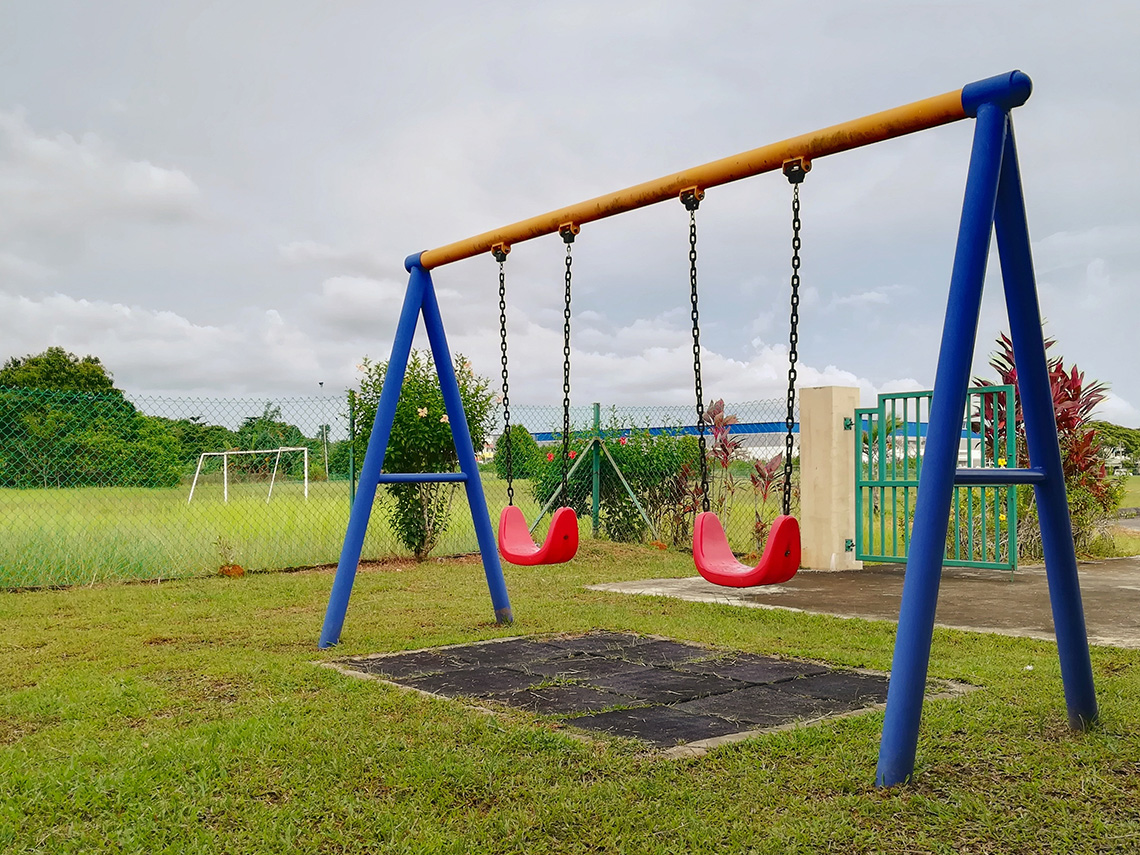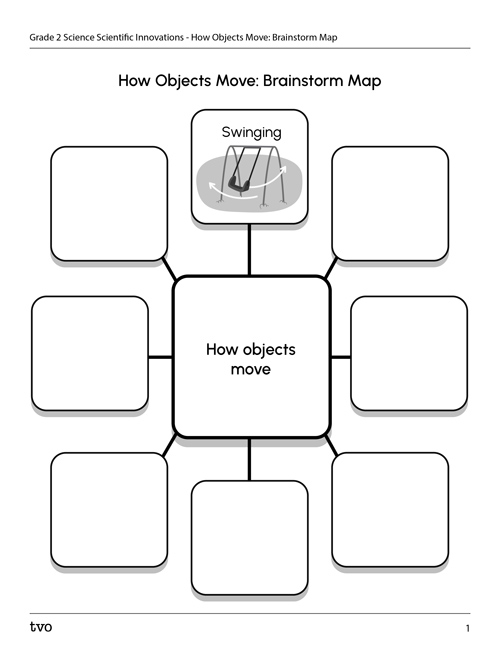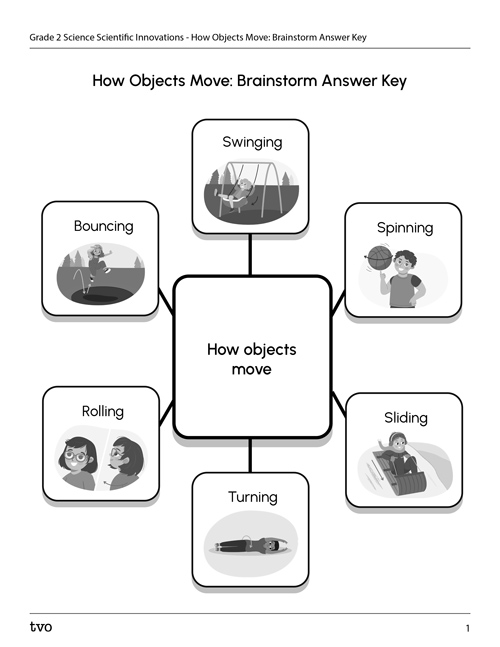Minds On
Let’s get started
Let’s examine the ways objects move outdoors.

Two teachers are discussing. Teacher A: What does it mean to move? Teacher B: Great question, Teacher A! Movement is a change in location or position. Teacher A: How can objects move? Teacher B: Objects can move in many ways. They also help people move in many ways!
Explore the following videos of a swing and a ramp. Consider the following questions as you explore.
- How might someone move on a swing?
- How might someone move on a ramp?
Record your ideas digitally, orally, or on paper.
Action
How does it move?

Objects move and help people move in different ways.
Let’s explore the examples from the Minds On in more detail.
A swing

How might a swing move?
Press ‘Answer’ to check out an idea about how a swing might move.
How might someone on a swing move?
Press ‘Answer’ to explore a way a person may move a swing.
A swing does not move by itself. A person can use a force to move a swing.
For example, they might sit on the swing and pump their legs to move the swing back and forth.
They might also ask someone to push the swing to keep it moving back and forth.
Press the following tabs to access images and videos to explore how swing can move before, during, and after someone or something swings them.
Before any movement happens, the swing is still.

During movement, the swing moves back and forth.
After someone stops swinging, the swing may continue to move back and forth.
Eventually the swing will stop moving.
A ramp

Did you know that a slide is a type of ramp?
A ramp is a slanted surface. It connects a lower level to a higher level. For example, it could connect the ground to a play structure.
Examine the following images of slides to explore examples of higher and lower levels.

A ramp
A playground fort structure has a slide attached to it and access is from the top of the fort. This is labelled as upper level. The bottom end of the slide is labelled lower level.

A slide
Ramp movement is different from a swing’s movement.
How might the ramp move?
Press ‘Answer’ to explore how a ramp might move.
A ramp is an object that does not move.
How might someone move on a ramp?
Press ‘Answer’ to consider how someone might move on a ramp!
Someone might move up and down the ramp by rolling, walking, sliding or climbing.
Pause and Reflect
What does a ramp need?
Consider, what would happen if the ramp were flat? Would someone still move up and down on the ramp?
Explain your thinking.

How can playgrounds include everyone?
Communities work together to design playgrounds where everyone can play together.
It is important to include diverse structures and equipment in a playground so everyone can play!
Some ideas include:
- wide pathways
- ramps and handrails
- adaptive swings
- accessible merry-go-rounds, we-go-rounds and group spinners
- raised sand tables
- shade and areas to rest
Explore the following Carousel of images to learn more about accessible playgrounds. Accessible play means everyone can play together!
Let’s brainstorm!
People might move back and forth on a swing and roll or slide up and down on a ramp.
How else might an object move?
Brainstorm other ways objects might move.
Record your ideas digitally, orally, or on paper. Consider making a brainstorm map to help with your thinking!
Consider using the How Objects Move: Brainstorm Map in your notebook or using the following fillable and printable document.
How Objects Move: Brainstorm Map

Press the Activity button to access the How Objects Move: Brainstorm Map.
Activity (Open PDF in a new tab)Explore the following brainstorm map answer key about how objects might move. Do you have any ideas you would add? What did you brainstorm?
How Objects Move: Brainstorm Answer Key

Press the Activity button to access the How Objects Move: Brainstorm Answer Key.
Activity (Open PDF in a new tab)Exploring movement
Examine the following image and description of a playground. Consider the following questions as you explore:
- How are the objects moving?
- How are the objects helping people move?
In the following Matching activity, choose the object that best fits the movement!
Consolidation
Putting it all together
You have explored the different ways objects move and/or help people move in different ways.
Next, you are going to design a playground. Your playground must have objects that move in at least three different ways.
Press ‘Hint’ to check out some guiding ideas.
Objects move in different ways including:
- swinging
- rolling
- bouncing
- turning
- spinning
- sliding
After you have designed your playground, respond to the questions that follow.
Design a playground using a method of your choice or use the following grid map.
Use the following checklist to explain your playground design. Record your answers.
My playground design
Record your ideas digitally, orally, or on paper.
Reflection
How do you feel about what you have learned in this activity? Which of the next four sentences best matches how you are feeling about your learning? Press the button that is beside this sentence.
I feel…
Now, record your ideas about your feelings using a voice recorder, speech-to-text, or writing tool.








